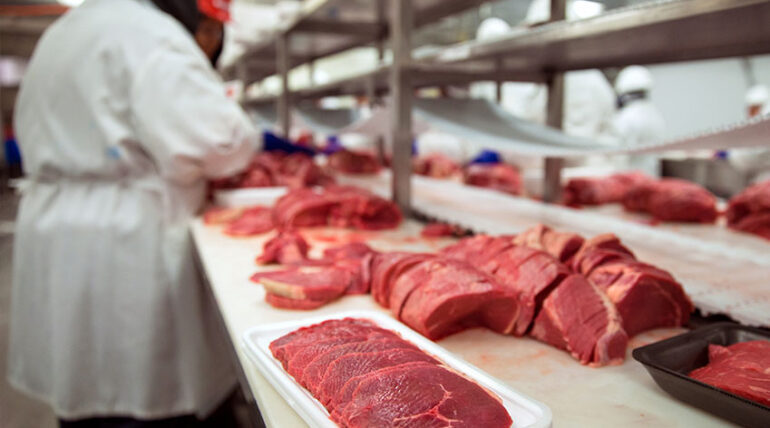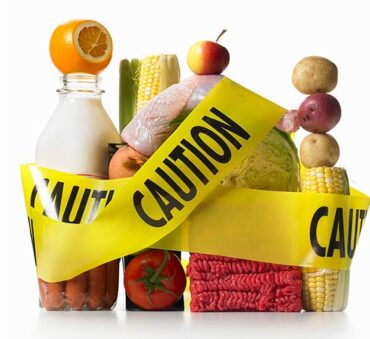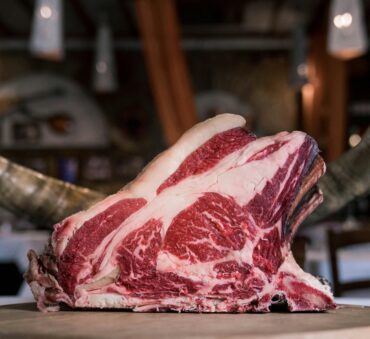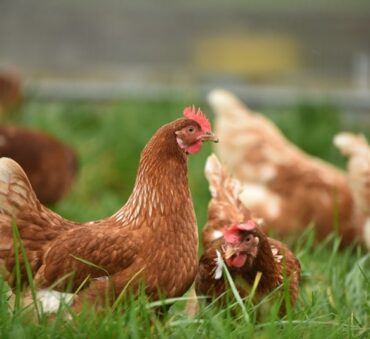As the world becomes increasingly aware of the negative impact that greenhouse gas (GHG) emissions are having on the environment, businesses are under pressure to find ways to reduce their carbon footprint. Unfortunately, many companies are still failing to adopt sustainable practices, even though the solutions are readily available.
Rendering meat and fat is one solution that cuts emissions and provides valuable resources for companies. For businesses that produce large quantities of meat by-products, proper rendering workflows can help save the environment, time, and money by reusing waste.
This guide is designed to help readers navigate the topic of meat rendering for businesses. We will explain what meat and fat rendering is, list the various business waste meat-based products that can be upcycled, describe the process of rendering plants, and highlight the many benefits of rendered by-products. Our team at Shapiro is an expert in the field of food waste management and can answer any questions you may have.
What does it mean to render fat and meat?
Fat and meat rendering, also known as animal rendering, is the process of converting animal by-products, such as bones and fat, into usable products. The process is carried out in large rendering plants and results in a range of upcycled food products.
Animal rendering is an important part of the meat processing industry, as it enables businesses to reduce their waste and greenhouse gas (GHG) emissions, as well as provide valuable raw materials for other industries. By properly rendering animal fats and meats, businesses can reduce the risk of food destruction in the event of a food recall and upcycle food byproducts into new, usable products.
Business Applications of Meat and Fat Rendering and Their Use Cases
These are some of the most common upcycling use cases for rendered products:
- Beef waste: Beef waste, such as bones and fat, can be used to make pet food, animal feed, and fertilizers. Some companies also use beef waste to produce gelatin and collagen for various applications, such as food and pharmaceuticals.
- Pork waste: Pork waste, such as organs and blood, can be used to make animal feed, pet food, and fertilizers. Some companies also use pork waste to produce enzymes, biodiesel, and pharmaceuticals.
- Lamb waste: Lamb waste, such as bones and trimmings, can be used to make animal feed and pet food. Some companies also use lamb waste to produce lanolin, a natural oil used in various skincare and cosmetic products.
- Poultry waste (chicken, turkey, etc.): Poultry waste, such as feathers and litter, can be used to make animal feed, pet food, and fertilizers. Some companies also use poultry waste to produce biodiesel and biogas.
- Seafood waste: Seafood waste, such as shells and heads, can be used to make animal feed, pet food, and fertilizers. Some companies also use seafood waste to produce chitin, a biopolymer used in various applications, such as food packaging and biomedical devices. Additionally, some seafood waste can be used to make fish meal and fish oil, which are commonly used in aquaculture feeds.
Note: The exact use cases will depend on the specifics of the waste material and local regulations.
What does a rendering plant do, and what is the process?
The process of meat and fat rendering is a multi-step process that involves converting waste animal by-products into usable products. Here is a step-by-step explanation of what happens at each stage:
Collection and Transportation:
The first step in the rendering process is to collect the waste animal by-products from various sources, such as slaughterhouses, meatpacking plants, and farms. These by-products are then transported to the rendering plants in refrigerated trucks to ensure the freshness and quality of the raw materials.
Receiving and Storage:
At the rendering plant, the raw material is stored in a refrigerated room until it is ready to be processed. It is then inspected to ensure that it meets the quality standards set by the plant.
Pre-treatment:
The pre-treatment stage involves removing any inedible parts of the raw material, such as bones, hooves, and hair, which are then discarded. The remaining material is then cut into small pieces to make it easier to process.
Drying:
The next stage is drying, also known as “dry rendering.” The cut pieces of the raw material are placed in large ovens and exposed to medium-low heat to evaporate any moisture.
Grinding:
After the drying process, the dried pieces are then ground into smaller pieces using a grinder. This step helps to increase the surface area of the material, making it easier to extract the fat.
Fat Extraction:
The ground material is then subjected to a process known as “wet rendering.” The material is placed in large vats and heated to a high temperature to release the fat. The fat rises to the surface and is skimmed off and stored in separate containers.
Strainer:
The remaining material, now referred to as “cracklings,” is then passed through a fine mesh strainer to remove any remaining fat.
Cooling:
The extracted fat is then cooled to room temperature and packaged for use in various products, such as soap, candles, and animal feeds.
The Business benefits of Meat Rendering
Rendering meat offers numerous benefits for businesses including:
Resource Recovery
Rendering allows businesses to recover valuable resources from their waste products, such as animal fats and protein, which can be used in the production of other products.
Waste Reduction
By rendering their waste products, businesses are able to significantly reduce the amount of waste they generate, helping them to comply with regulations, conserve space, and reduce disposal costs.
Environmental Benefits
Meat and fat-rendering plants play an important role in reducing greenhouse gas emissions from decomposing animal by-products. Additionally, rendering byproducts can also help to reduce the overall environmental impact of the meat industry, including the reduction of water, energy, and land usage.
Increased Revenues
By converting waste products into valuable resources, businesses can generate additional revenues and reduce costs, increasing their overall profitability.
Improved Public Perception
Businesses can demonstrate their commitment to environmental and sustainable practices by taking responsibility for their waste products, improving their reputation, and building trust with their customers and other stakeholders.
Transform Your Business with Sustainable Animal Rendering solutions
Fat and meat rendering provide multiple benefits to businesses, including the reduction of greenhouse gas emissions, the prevention of water contamination, the recovery of valuable products, cost savings, and regulatory compliance. By working with an experienced rendering company like ShapiroE, businesses can avoid the hassle and risks associated with managing their meat and fat byproducts and focus on their core operations.
Contact us. We offer expert advice and reliable food waste recycling management solutions.
Baily Ramsey, an accomplished marketing specialist, brings a unique blend of anthropological insight and marketing finesse to the digital landscape. Specializing in educational content creation, she creates content for various industries, with a particular interest in environmental initiatives.



